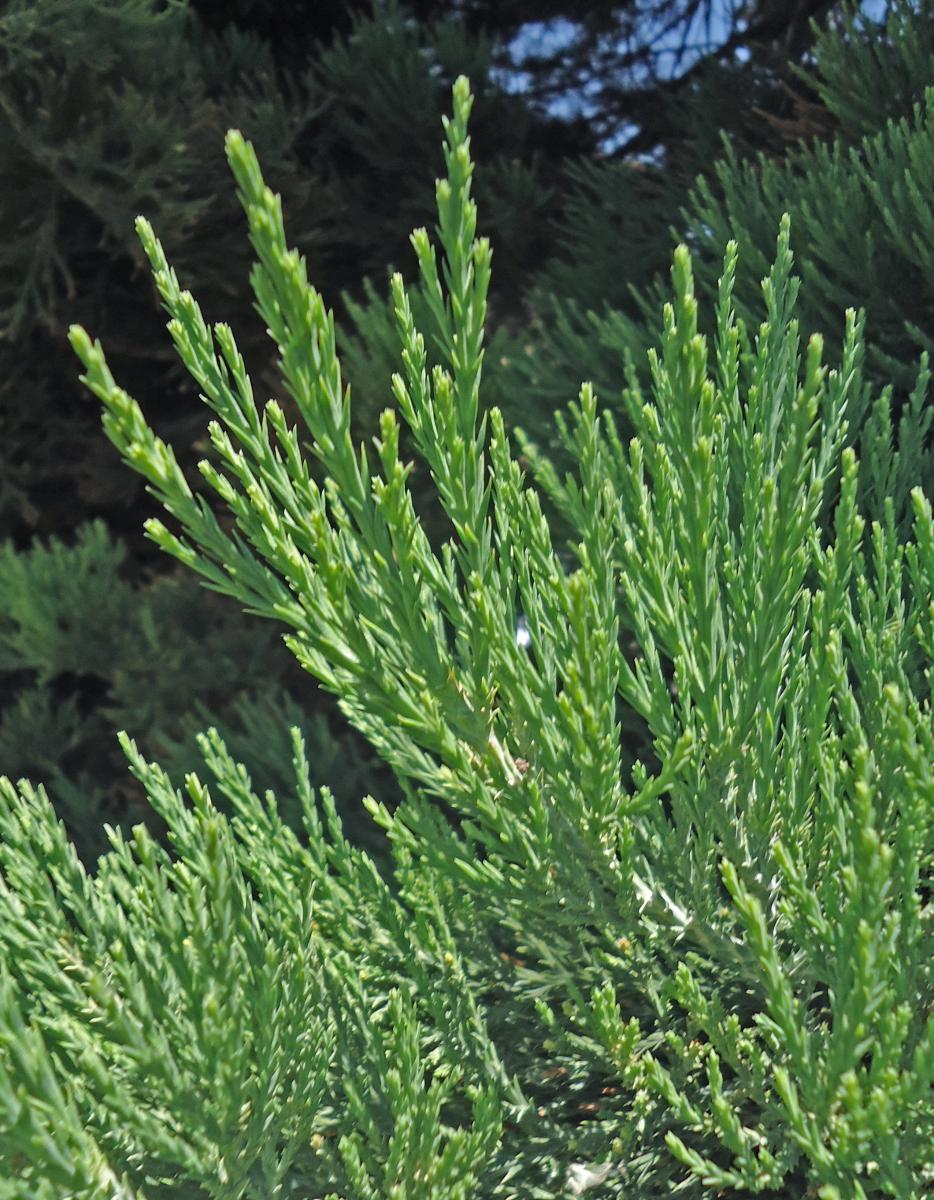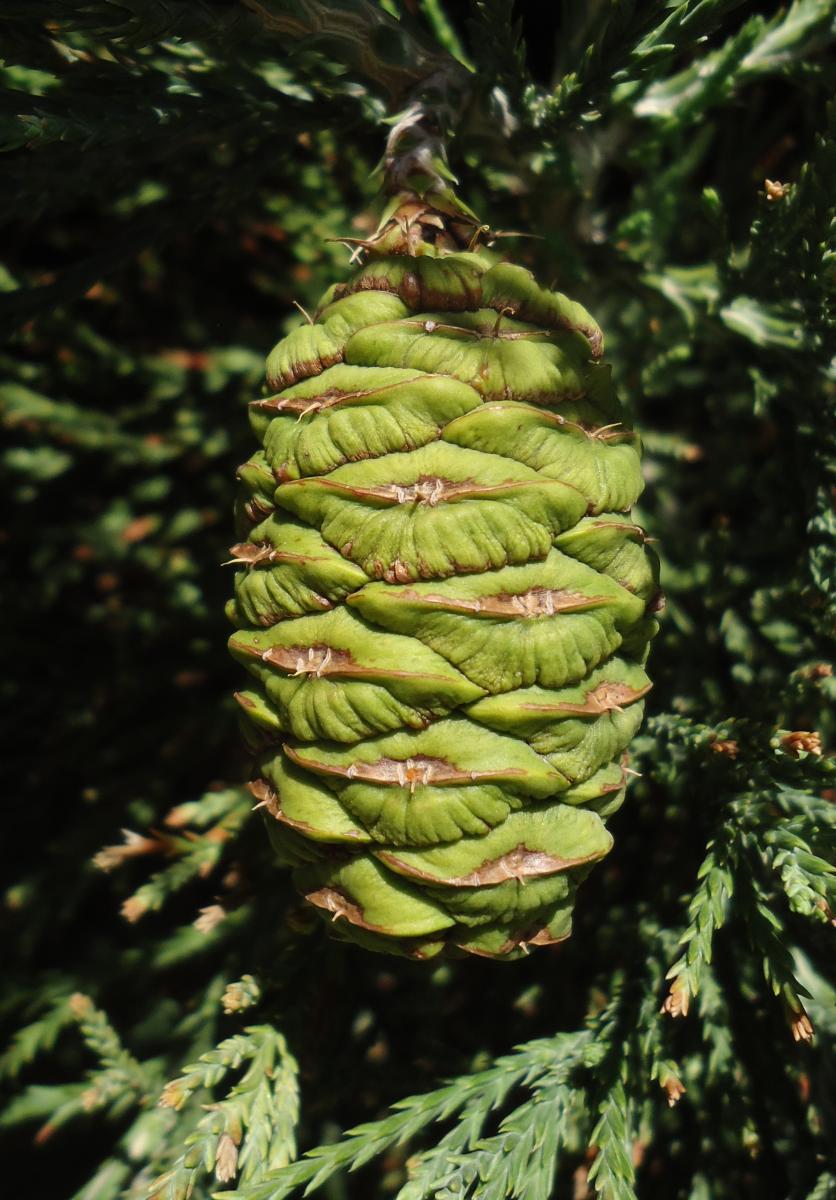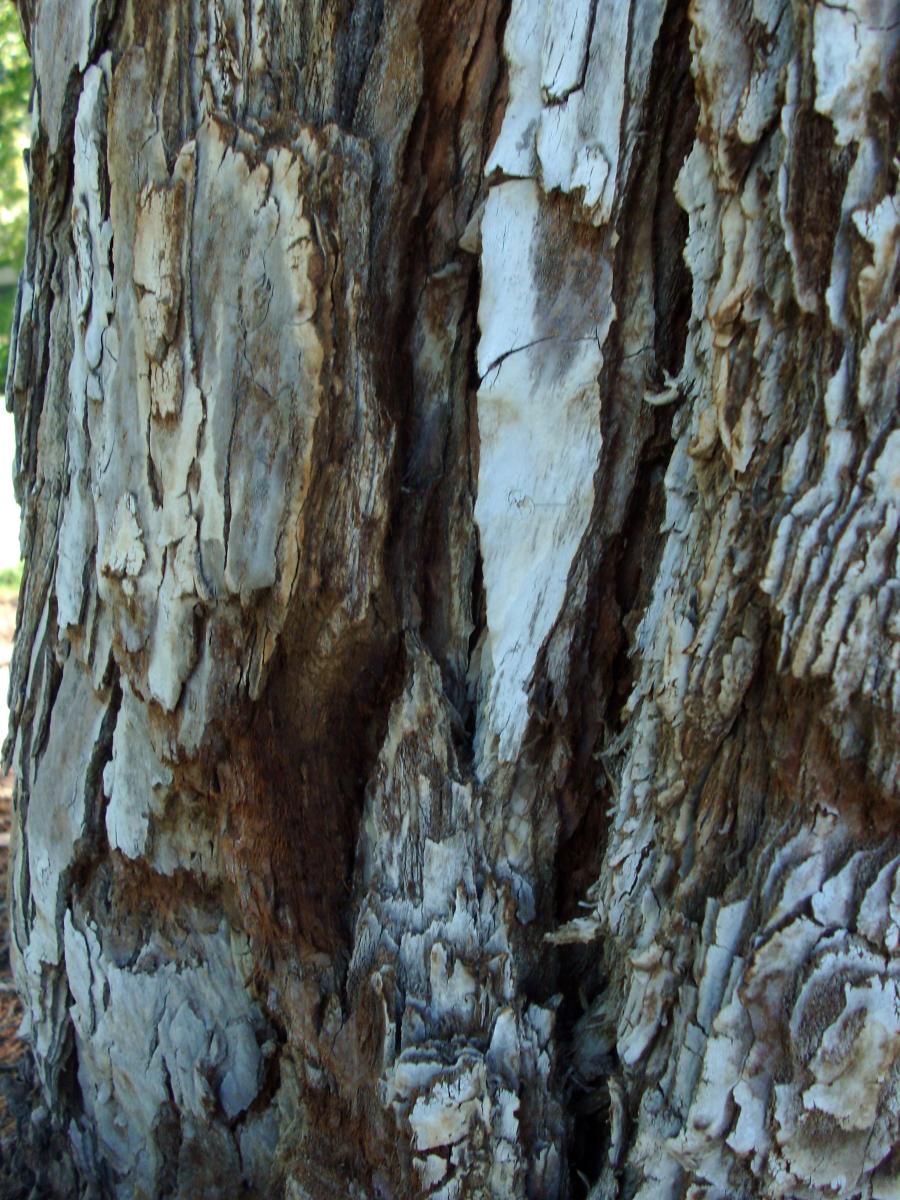Giant Sequoia




Sequoiadendron giganteum
Leaves: Evergreen. Short scale-like leaves ⅛ to ½ inch long, are usually awl-shaped or triangular and point forward. They grow close to each other, tightly wrapping around smaller branches in a spiral. Dark bluish green color.
Bark/Twigs: Bark is spongy, slightly fibrous, and a rich red-brown in color. Fire-resistant.
Flowers/Fruit: Inconspicuous green flowers in spring. Produces a woody, oval cone, 1½ to 3 inches long, 1 to 2 inches wide. Cones start out green and turn red-brown at maturity and are surprisingly small for such a large tree. When open, the cones appear made of 25 to 40 wrinkled, indented scales with diamond shaped ends.
Mature size and shape: Large. Reaches 60 to 80 feet hight in landscape settings. Wild trees are known to reach 250 to 300 feet. Dense, upright, conical crown. Dense and narrow pyramidal shape. Loses its lower branches as tree ages.
General information/special features: Plant in full sun. Prefers deep, moist, well drained soils. Withstands some dry conditions. Avoid very hot locations. Does well in Utah as long as it doesn’t get too cold. Extremely resistant to insects, diseases, and fire. Are the most massive tree species on earth. The genus can be traced to the Triassic Period of 200 million years ago.
Landscape use and maintenance: Good evergreen specimen tree. Use in large areas such as parks and can be used as a visual or windscreen. Average growing rate. Low maintenance.
USDA Hardiness Zone: 6 to 8
Family/Origin: Taxodiaceae - Redwood. Native to a few groves in the western slopes of the Sierra Nevada in California. Native trees grow rapidly, get very large (nearly 300 feet tall), and can be 4,000 to 5,000 years old.
Campus Use: Uncommon. Can be found in northeast corner of President's Circle lawn area or west of Stewart (Bld 6).
